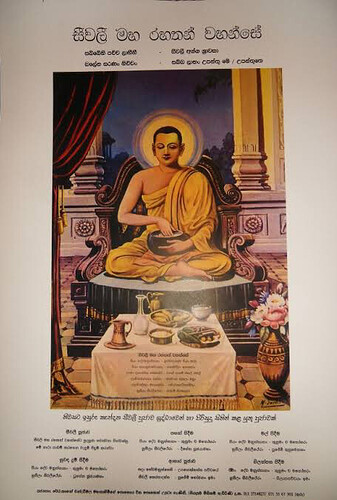Yes bhante, but I have heard the Sri Lankan monks say that the minor rule is about keeping the bowl in the lap without holding it.
Yes bhante, it is true. Thank you for the observation.
It is said that the Sri Lankan lineage completely died out in the 17/18th century leaving only few (valid or invalid) samaneras. Some says they and people in that century still knew their predecessors rites.
If it is true, then, would it suggest that the current Sri Lankan way has the more chance to be the original rite?
If we believe Sri Lankans didn’t know even their ancient monks’ rites at 17/18th centuries, then it could suggest that the Burmese and Thai way have more chance.
Thank you bhante for the quote.
It is true that not keeping bowl in the lap while having meal, is more safe regarding the Vinaya rule.
The arguments I have heard against it (from monks from Sri Lankan tradition) are as follows.
“Is it not comfortable to eat in that way.”
“It is hard to imagine that the Buddha had meal in that way.”
“It is hard to imagine that the lay people in Buddha’s time prepared seats on the floor for the Buddha, after they invited the Buddha and Sangha for a Dana.”
“There are no clues about such a way of eating, in the texts” (eg: lay people preparing stands or separate mat on the floor … etc)
What do you think, bhante?
Does it show that at the time of depiction Burmese and Thai knew the ancient rite as “Lap”?
Could you please mention the era of the depiction?
Yes, if using a stand while eating was the original way, then it seems the Sri lankan stand is very small and demands bending while eating.
If “Lap” is the original way, then Sri Lankan small stand is enough to leave (store) the bowl aside after the meal.
